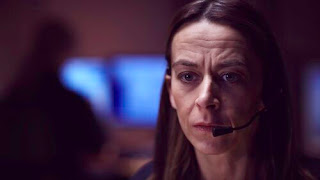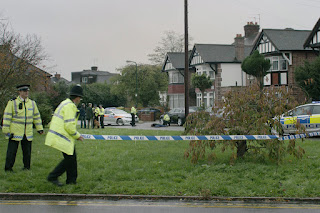Operator
The cinematography is limited. The film starts with the camera panning across multiple phone calls and computer screens which sets us in the call centre and shows how many phone calls there are at once. There are long lasting close ups, mid close ups and over the shoulder shots. This means that we stay located in the small cubicle where the phone call takes place. It makes us feel confined and trapped as if there is no escape from this life but also is parallel with the people in the fire. While they are trapped in their house, we are trapped in the confined space of the call centre cubicle waiting to see what happens. The fact we cannot see them builds the tension.
The sound is diegetic. At the beginning of the film, we here a lot of different phone calls all overlapping and we can hear keyboards typing. We are hearing glimpses of other phone calls and it lets us know that this cycle just continues all day for the people working there. We then hear the woman shouting about a fire and focus in on this conversation; all the other phone calls go quiet. This allows us to feel how the operator feels, which is that this is all that matters in this moment. However, when the phone call is over, it goes straight into another one which seems equally as important. There are a couple of seconds between the phone calls of complete silence, then we are straight into the next one. This conveys to us how the operator is not given a moment to recover or breathe after what she has witnessed.
In terms of Mis En Scene, we are not shown much. Through the help of cinematography, other than the operator, everything else is blurred and this makes the room it is set in feel unimportant; all attention and importance is in the phone call. The Mis-En-Scene also places us in the call centre at the beginning through the show of keyboards, computers and calls, and the cubicles for each call strengthen the feeling of being trapped.
The effectiveness of the performance is in the tone and dialogue. The woman on the phone seems frantic and scared and we realise how severe the situation is, while the operator remains calm and focussed. She seems reassuring and we can tell this is something she is used to and faces daily. It emphasises how much of a toil these high pressured jobs must have on people.


Comments
Post a Comment